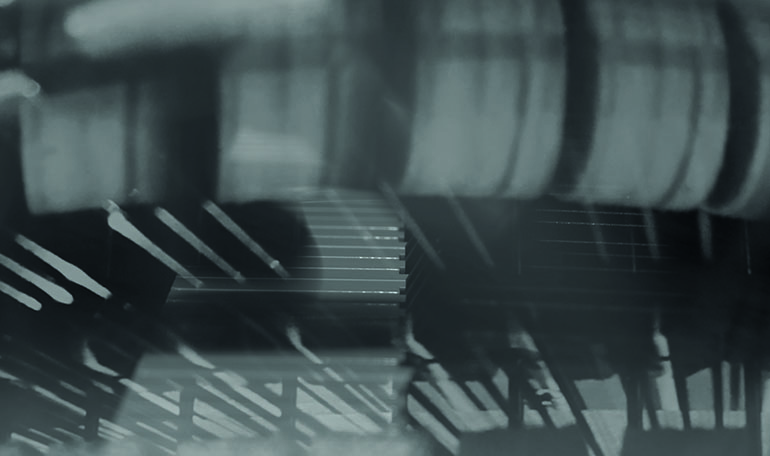
Johan Fröst
In Johan Fröst's licentiate thesis, he investigates classical art music in relation to moving image and the intermodal connections between hearing and vision.
Project title: With Music as a Script
Third-cycle subject area: Media and communication technology
Principal supervisor: Prof. Roberto Bresin, KTH
Assistant supervisor: Prof. Henrik Frisk, KMH
Admitted to: KTH
Project period: 2020-2026
Purpose and research questions
The purpose of this study is to interpret and visualize art musical form and content with the help of moving image. The moving imagery focuses on the playing musician and the gestures that arise when the music is played.
The study is conducted on the basis of the following research questions:
- How can musical content be lifted using film as a tool?
- How can the musical experience be enhanced with visual impressions?
- What impression does the music have in the film – can the film be reused to new compositions?
A recurring view is that classical art music should be consumed as it is and usually does not need any further stimulation of the mind. When classical art music is presented today with a moving image, it is often a matter of an image production that has the task of reproducing the situation of the actual concert.
Studies show that the picture tends to dominate when music is combined with moving image. One of the reasons for this is that the visual mind accounts for 80% of the impressions the brain processes. The result is that the recipient's attention to the musical process deteriorates or is disturbed, thus reducing the musical intrinsic value. The method of avoiding this is to create an imagery that has the task of lifting and highlighting musical form and content.
Method
With the help of small cameras this is investigated in practice. In the movie below, twelve cameras were used simultaneously when the music was played. The moving image layers (films) are then placed on top of each other with different opacity and then interpreted as an figurative interpretation with the music as a model to create pictorial similarities with musical form, musical events, parameters, textures and sound reliefs.
Resultats so far
Four labs have been conducted, resulting in four films, one focusing on a percussionist and three focusing on a pianist.
The purpose of this project is to show parts of these films and to report experiences from this ongoing project focusing on questions about how a moving imagery can be designed for the viewer/listener to see and hear intermodally. An excerpt from one of the films can be seen below (from Debussy: Reflects dance lèau, Johan Fröst, piano).
By extension, the problem formulations are also based on the new intermedial aspects that arise when the music and, the film intended for the music, interact with each other.
To alleviate this problem, one of the completed films has been used as a model for composing an electroacoustic track. The new electro-acoustic music is then correlated with the original piano music. The resulting fusion gives indications of the power of the visual representation of the musical form in the original music. Also an excerpt from this electroacoustic composition, which used the film as a model, follows. The excerpt is from Image Scheme by Henrik Frisk from 2019.
Contributors
Part of the project is also Henrik Frisk, a musician, composer and professor at KMH. Also in attendance is photographer Josef Doukkali, a former lecturer of Music Production and Media Production at KMH. Joakim Anterot, lecturer of percussion, Erik Lanninger, senior lecturer of interpretation and Stefan Therstam, professor of organ improvisation are also part of the project.
About the PhD student
In 1992 Johan Fröst Dr. (DMA. MM) received a soloist diploma at KMH. In the same year, he made his debut with the Swedish Radio Symphony Orchestra conducted by Raphael Frübeck de Burgos. Since then, Johan has given concerts and worked as a pianist and won several international piano competitions. He is also the founder of the Mimir Chamber Music Festival, Fort-Worth, Texas, USA, of which he was the artistic director for 1998–2000. In 2001 he received his doctorate (DMA, Doctor of Musical Arts) in piano performance at Rice University in Houston, USA.
Today, Johan is associate professor in piano at KMH and employed at the department of classical music, conducting, composition and music theory.
Over the years, he has collaborated with a number of prominent instrumentalists and conductors and has been responsible for several Swedish premieres by composers such as Anders Hillborg, Fredrik Högberg, and Jonas Bohlin. Johan has also made notable recordings with piano and chamber music by, among others, Stravinsky, Rachmaninov, K. H. Stockhausen and Chick Corea.
